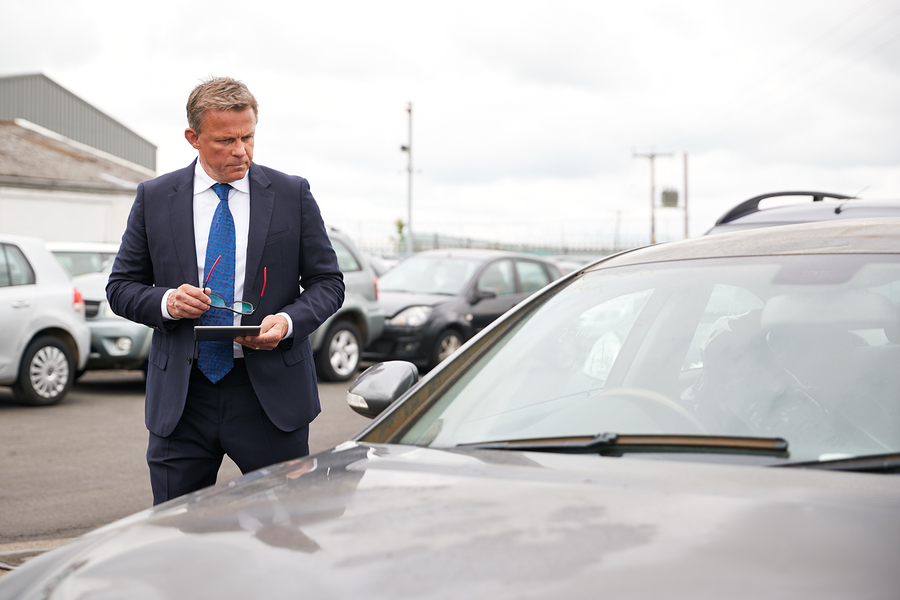
A T-bone accident results when one car strikes another directly in the side, making a “T” shape with the two vehicles. Most often, T-bone accidents occur in intersections, often as a result of one driver failing to stop properly at an intersection. Following a T-bone accident, police officers, attorneys, or insurance companies may need to investigate to determine the cause of the accident and who bears liability, since several factors can influence T-bone accidents.
Contributing Factors in T-Bone Accidents
Several factors can come into play in a T-bone accident. These include:
Speeding drivers. At high rates of speed, drivers may experience substantially higher risks of all types of accidents, including T-bone accidents. As drivers approach an intersection at high rates of speed, they may struggle to note the presence of other traffic or to safely stop in time. Speeding drivers may also struggle to react appropriately to other vehicles around them, when those vehicles present an accident risk.
Distracted drivers. Many drivers take their full attention off the road as much as 10 percent of the time they spend behind the wheel. Distractions can occur in manual forms when the drivers take their eyes off the road, visual forms when drivers take their eyes off the road, and mental forms when drivers daydream or pay attention to things unrelated to driving.
Distractions may include:
- Phone use, from texting and driving to talking
- Putting on makeup
- Eating and drinking
- Talking to other people in the car, especially dealing with children
- Reaching for something dropped in the car
- Checking or programming a GPS device
Distracted drivers may fail to note a stop sign or red light as they sail through it, or they might not notice the presence of other vehicles in the intersection in time to come to a full stop.
Inebriated drivers. Drivers under the influence of drugs and alcohol struggle to control their vehicles safely. Drunk drivers may have trouble keeping their vehicles on the road, responding to potential accident conditions, or remembering the rules of the road. Alcohol can inhibit decision-making abilities as well as impacting both fine and gross motor control. Drunk drivers may drive straight through a stop sign or red light without remembering why those traffic signals exist.
Poor weather conditions. Drivers may struggle to stop their vehicles safely in poor weather conditions, especially heavy rain or snow. Slick roads make stopping incredibly difficult, especially if drivers speed. While poor weather conditions can increase accident risk substantially, including the risk of T-bone accidents, drivers must safely navigate the roads and maintain control of their vehicles. Drivers may need to slow down, pull off the road in particularly bad weather, or allow more time for other drivers to safely proceed through an intersection when weather conditions deteriorate.
Failure to yield. Some drivers may fail to yield safely when approaching an intersection. They may attempt to force their way into traffic instead of safely yielding and allowing another driver to proceed. Failure to yield at stop signs may also mean not coming to a full stop. The rules of the road clearly designate the party that has right of way at any intersection. When the driver who does not have right of way fails to yield, that driver may bear liability for the accident.
Other Factors Contributing to T-Bone Accidents
In addition to factors that drivers can control on the road, many factors outside driver control can also contribute to T-bone accidents. These factors may raise accident risk as well as leaving other parties liable for some or all of the accident. Consult an attorney to determine what other factors may have contributed to your accident and who may share liability for your injuries.
Mechanical failures. Mechanical failures, especially brake failures or tire problems, can substantially increase the risk of a T-bone accident. When brakes fail as a driver moves toward an intersection, the brake failure may prevent the vehicle from stopping safely in the intersection. Tire blowouts can also cause a car to swing out of the driver’s control.
In the case of mechanical failure, liability for the accident may rest with:
- The owner of the vehicle, who bears responsibility for taking care of the vehicle and ensuring that mechanical replacements and maintenance occur on time
- The vehicle or part manufacturer, if that manufacturer produced a vehicle that does not provide the appropriate level of safety to both drivers of that vehicle and others on the road
- A mechanic who recently worked on the vehicle, if the mechanic failed to notice a problem with the vehicle or did not fix the vehicle properly when the owner identified a problem
Drivers working at the time of the accident. Employers who require their employees to drive as part of their daily job responsibilities bear a duty of care to others on the road and to their employees. Those employers must provide safe working conditions for their drivers.
Under many circumstances, employers may share liability for accidents caused by their drivers, especially if:
- Employers require their drivers, especially truck drivers, to exceed the number of hours they can safely remind behind the wheel each day or each week
- Employers require their drivers to drive after the driver indicates they feel conditions have grown unsafe, including poor weather conditions or a driver who feels under the weather
- Employers who require their drivers to drive in spite of inebriation
- Employers who do not properly maintain their vehicles
- Employers who pressure drivers to break speed limits and other laws to meet deadlines or move cargo faster
- Employers who continue to employ drivers known to cause accidents or who have a history of moving violation tickets
An attorney can help you better determine whether these factors apply to your accident, and how to handle your personal injury claim following a serious T-bone accident.
If you suffer injuries in a T-bone accident, an attorney can help you determine who bears liability in your accident and how much compensation you may deserve.














